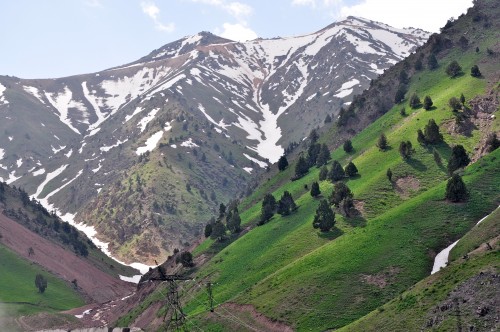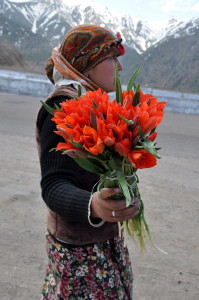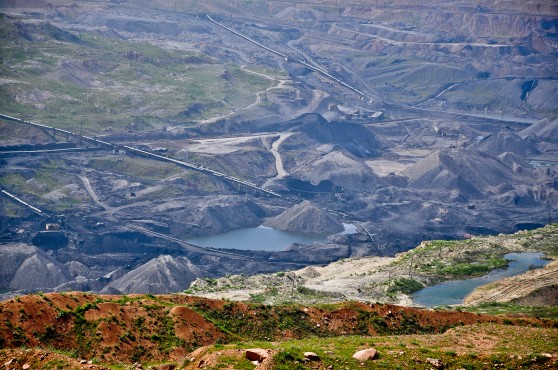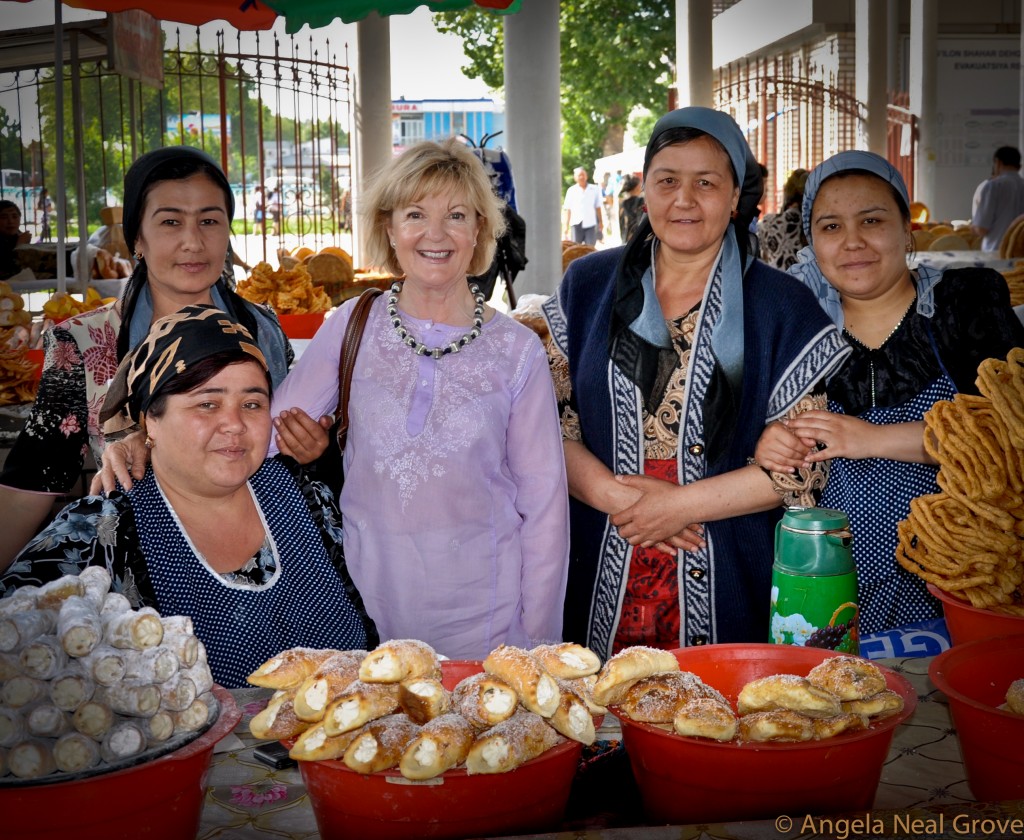
The Ferghana Valley was settled by Alexander the Great and chronicled by Pliny who wrote of the legendary horses said to sweat blood
Recently a 6.2 earthquake rumbled through the Ferghana Valley killing 14 souls and disrupting the lives of hundreds. The news made a mere mention on page 10 of the New York Times regional edition. It caught my attention though. This time last year I was there.
Ferghana a fabled fertile valley
Tucked into the heart of Central Asia, surrounded by spurs of the towering Tien Shan and Pamir mountains, the Ferghana Valley was settled by Alexander the Great and chronicled by Pliny who wrote of the legendary horses said to sweat blood. In Spring I heard wild tulips fill mountain meadows. Walnut, pistachio and apple orchards flourish and mulberry trees line the roads, which soon after bud-break are stripped of leaves to feed ravenous silk worms, a thriving cottage industry. This was enough to catch my attention. I was in the neighborhood. I had been traveling the Silk Road with a group of friends who were flying home from Tashkent. I wanted to stay and explore. I found a guide, Tahir, and a driver, Araf, and set off.
Stan means ‘home of’ thus Uzbekistan is theoretically home of the Uzbek’s
Ferghana a divided valley
Leaving Tashkent along the wide, tree-lined boulevards, windows down and warm breeze blowing, I felt a thrill of adventure. Our Silk Road journey from Beijing had been disrupted. Travel in Kyrgyzstan was cancelled, a revolution and toppled government deterred us. I thought my solo sojourn into the valley a consolation prize. Modern Tashkent has the feel of a provincial Russian town. I imagined the old walled caravan city with its twenty-five kilometers of walls and eleven carved wooden city gates destroyed in the devastating 1966 earthquake. Earthquakes, revolutions, ethnic tensions a nomadic heritage this has always been the backdrop. Lenin considered the valley a troublesome Islamic tinderbox. His solution an arbitrary division. Today it is a jigsaw of Uzbek, Kirghiz and Tajik territory. Tajikistan holds the narrow mouth, Kyrgyzstan the high ground and Uzbekistan the valley floor. (Stan means home of, thus Uzbekistan is theoretically home of the Uzbek’s)
Ferghana travel
As we crested the mountains at the head of the valley, there were women with armfuls of red

flowers. Nearby was a vegetable stand. We stopped. The flowers were wild tulips with pointed crimson petals and ebony centers. Tulips originated in the Tien Shan mountain area and traveled west along the Silk Road. Another plant which migrated similarly was rhubarb – and sure enough it was rhubarb on the vegetable stand. Tahir bought some and when we climbed back into the car he set about peeling and passed some back for me. It was really sour and I mused how clean. I nibbled gingerly not wanting to offend.
The road through the mountains was narrow – one lane in each direction. The further from Tashkent, the more pock marked and pitted the surface. A pot-hole patrol futilely attempted the band-aid approach, filling some of the deeper holes. The result was a patchwork-quilt road. The springs in the Russian built car were not designed for the abuse so the ride was jarring and noisy. There was a heavy police presence and military trucks with armed soldiers. One convoy honked belligerently at a tractor pulling a cart, almost driving it off the narrow road. However everything stopped for a huge flock of sheep which Tahir called shish kebab and said they were being moved to summer pasture. They use the freeway too. Approaching a tunnel Tahir warned me to put my camera on the floor out of site. So far police at the frequent checks and military in trucks looked distinctly unfriendly. I was happy to comply. The tunnel was obviously beyond the jurisdiction of the pothole patrol and we vibrated and bounced along in the dark.

Valley of Contrasts
First impressions were a dichotomy. There were rolling fields of wheat, cotton, bright yellow mustard, bright red poppies and stands of purple iris. Storks gathered amiably in a field where leafy groves of white-trunked poplars bordered streams. There were pristine snow-capped peaks. There were also power plants, a chemical factory with tall chimneys spewing pollution, crumbling soviet style apartment blocks and vast open-pit mining leaving ugly open scars. The fertile fields of cotton are watered from channels leading from the Kokand Canal. The construction of this was ordered by Stalin and built by “volunteers” in a remarkable forty-five days. The goal was to make Uzbekistan the largest producer of cotton in the world. In fact so much water is diverted from the Syr-Darya river that much of the Aral Sea, the river’s destination, has become a desert.
I was warned to be fully covered and modestly dressed and heard that the valley was being infiltrated by Muslim extremists. I had once had rocks thrown at me in a bazaar in Kabul but this was nothing like that. The Uzbeks I met in markets and restaurants could not have been more friendly or welcoming. We exchanged details of our families, were photographed together and laughed. On a couple of occasions women looked away from the camera – but were still comfortable that I took the photographs. (In the image of the girl with the tulips she preferred not to look at the camera but was otherwise agreeable).
I traveled for three days in the valley. I went to Andijon where in 2005 hundreds of government troops, some in helicopters shot 1000 unarmed peaceful protesters. In Andijon I also climbed the hill where Babur, founder of the Indian Mughal dynasty is said to have looked East and declared his destiny. I watched silk being unravelled from cocoons which had been delivered in sacks to the Silk factories and watched as it it was dyed and woven into brilliant lengths of Ikat fabric.
Kaleidoscope of memories
So when I saw a strong earthquake had rumbled through the valley impressions came tumbling back in a kaleidoscope. The amazing physical beauty on one hand and hideous desecration on the other. Historic turquoise tiled mosques and palaces, colorful marketplaces and the friendly people. My friends Tahir and Araf. I also recall the omnipresent police presence. The Ferghana Valley is an incredibly beautiful but tough place to live. It has been for millenia and there are few signs that it will change soon.
